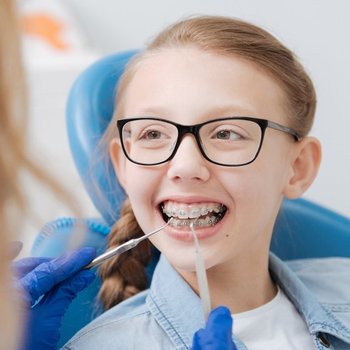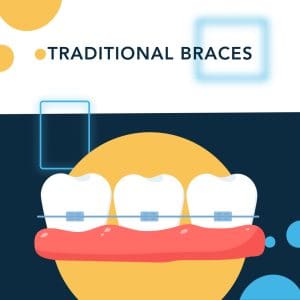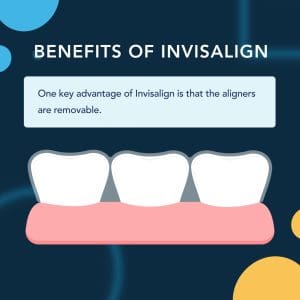Choosing the right orthodontic treatment can be a pivotal decision in improving your dental health and achieving the smile you’ve always wanted. With advancements in dental technology, the traditional metal braces that once dominated the field of orthodontics are now joined by a more discreet option: Invisalign. Both treatments offer unique benefits and can be effective in straightening teeth and correcting bites, but the decision between braces and Invisalign hinges on various factors, including aesthetics, comfort, cost, and the complexity of the dental issues at hand.
In this article, we’ll explore the key differences between braces and Invisalign, helping you understand how each works, their pros and cons, and the considerations you should weigh before making a choice. Whether you’re a teenager apprehensive about your appearance at school or an adult seeking a less noticeable solution in the workplace, this guide aims to arm you with the necessary information to make an informed decision on which orthodontic treatment is right for you.
What Are Traditional Braces?
Traditional braces, often made from high-grade stainless steel, have been the cornerstone of orthodontic treatment for decades. They consist of metal brackets glued to each tooth and linked by a thin archwire, which an orthodontist periodically tightens to gradually move teeth into the desired position. Modern braces may also include colorful bands, making them more appealing to younger patients. This method is highly effective for treating a wide range of dental misalignments and complexities.
Pros of Traditional Braces
Traditional braces have long been a reliable choice for orthodontic treatment, offering numerous advantages that make them a preferred option for many. Known for their effectiveness in correcting complex tooth and jaw issues, braces are adept at quickly closing gaps and aligning teeth— often faster than alternative treatments. From costs to reliability, there are many different benefits to consider when choosing between traditional braces or Invisalign.
Effectiveness
Traditional braces are highly effective, especially for severe misalignments and bite issues. The continuous force applied through metal brackets and wires ensures consistent progress, making them ideal for complex orthodontic cases where precision and predictability are required.
Versatility
Braces are a versatile orthodontic solution that can effectively treat a variety of dental issues, ranging from minor alignment problems to more complex cases requiring jaw and bite correction. Braces are suitable for both children and adults and can be customized to fit different levels of severity in dental misalignments.
Cost
Compared to newer orthodontic treatments like Invisalign, traditional braces tend to be more affordable. They offer a lower-cost solution with payment plans typically available through dental practices, making them accessible to a broader range of patients seeking orthodontic care.
Less Responsibility
With traditional braces, the patient is less responsible for managing the treatment. Once applied by an orthodontist, they remain in place until professionally removed at the end of treatment. Since they are non-removable, patients don’t need to worry about losing aligners or remembering to wear them for a certain number of hours each day, making the treatment process much simpler.
Customization
Traditional braces provide a range of customization options, including different band colors that are particularly attractive to younger patients. This allows individuals to personalize their orthodontic treatment, making the journey toward a straighter smile more enjoyable and tailored to their personal preferences.
Cons of Traditional Braces
While traditional braces are highly effective for orthodontic treatment, they come with certain drawbacks that prospective patients should consider. From being visible and harder to clean to discomfort, we’ll explore these challenges and provide a balanced view of what to expect with traditional braces.
Visibility
Traditional braces are quite noticeable due to their metal brackets and wires, making them a less attractive option for those who prefer a more discreet dental treatment. This visibility can be a particular concern for adults and teenagers who are self-conscious about their appearance.
Discomfort
The brackets and wires of traditional braces can cause discomfort, especially after tightening appointments. Patients also often experience soreness and irritation in the gums and inner cheeks, which can be unpleasant and sometimes painful.
Dietary Restrictions
Patients with traditional braces must avoid certain foods that can damage the brackets and wires. Hard, sticky, or chewy foods like popcorn, nuts, and caramel are off-limits, which can make dining less enjoyable and restrictive.
Difficulty in Cleaning
Cleaning teeth with traditional braces is more challenging because food particles and plaque can easily get trapped around the brackets and wires. Proper cleaning requires more time and effort, including special tools like floss threaders and interdental brushes to maintain oral hygiene.
Longer Treatment Duration
Traditional braces typically require a longer treatment duration than other orthodontic methods, like Invisalign. The total time can vary widely depending on the complexity of the dental issues, often ranging from one to three years.
Frequent Adjustments
Braces need regular adjustments, usually every 4 to 6 weeks, to tighten the archwire and guide the teeth into proper alignment. These frequent visits to the orthodontist can be inconvenient, particularly for busy patients who are either in school or working full-time.
Risk of Tooth Discoloration
Traditional braces may cause tooth discoloration, as the area around the brackets may stain if not cleaned thoroughly. Once the braces are removed, this can lead to uneven coloration, necessitating further cosmetic dental treatments to restore uniform tooth color.
What is Invisalign Treatment?
Invisalign treatment is a modern orthodontic method that uses clear, custom-made, removable aligners to gradually shift teeth into their correct position. These aligners are virtually invisible and are replaced every few weeks to accommodate tooth movement. Designed for comfort and convenience, Invisalign allows patients to eat, brush, and floss normally, offering a less noticeable alternative to traditional braces with similar effectiveness in treating mild to moderate dental misalignments.
Pros of Invisalign Treatment
Invisalign aligners have revolutionized orthodontic treatment, offering an appealing blend of aesthetics and functionality that caters to the modern patient’s lifestyle and preferences. From being nearly invisible to removable, there are many distinct benefits and innovative features that highlight why Invisalign treatment has become a popular choice in orthodontic care.
Nearly Invisible
Invisalign aligners are crafted from clear, smooth plastic, making them nearly invisible when worn. This subtlety is particularly appealing to adults and teens who are self-conscious about the appearance of traditional metal braces, allowing them to straighten their teeth without drawing attention to their treatment.
Removable
One key advantage of Invisalign is that the aligners are removable. This feature allows patients to take out the aligners during meals, making eating more comfortable and not restricting dietary choices. It also simplifies oral hygiene routines, as patients can brush and floss without the obstruction of fixed braces.
Comfort
Invisalign aligners are made from a special thermoplastic material custom-molded to fit snugly over the teeth. Their smooth surface is less likely to irritate the gums and cheeks. This comfort-focused design reduces the instances of discomfort commonly associated with the brackets and wires of traditional braces.
Less Treatment Time
In many cases, Invisalign can straighten teeth faster than traditional braces. The treatment duration with Invisalign averages about 12 to 18 months, although it can vary depending on the complexity of the alignment issues being addressed. This quicker turnaround is appealing to those looking for fast results.
Lifestyle Flexibility
Thanks to the aligners’ removability, Invisalign offers significant lifestyle flexibility. This feature not only simplifies eating and oral care routines but also means individuals can remove their aligners for special occasions, sports, or playing wind instruments without compromising the progress of their orthodontic treatment.
Cons of Invisalign Treatment
While Invisalign offers numerous advantages for orthodontic treatment, it’s important to consider some potential drawbacks before deciding if it’s the right choice for you. These aligners, though innovative, may not be suitable for all types of dental issues, especially more complex cases. This section will delve into the cons of Invisalign, providing a balanced perspective to help you understand the limitations and challenges that might accompany this treatment option.
Higher Cost
Invisalign is usually more expensive than traditional braces as it requires custom manufacturing of various sets of aligners, each designed to gradually move your teeth. Although the advanced technology and convenience of Invisalign make it worth the price, it can still be a significant investment.
Requires Discipline
Successful Invisalign treatment demands a high level of discipline from the patient. Aligners must be worn for at least 22 hours a day and only removed for eating, drinking, and oral care. Failure to follow this schedule can extend treatment time and compromise results.
Not Suitable for All Cases
Invisalign is not ideal for correcting all orthodontic issues. It is best suited for mild to moderate misalignments and may not be effective for severe cases or complex bite problems. An orthodontist can determine if Invisalign is an appropriate option based on specific dental needs.
Potential for Loss or Damage
The removable nature of Invisalign aligners also introduces the risk of loss or damage. Misplacing or damaging an aligner can delay the treatment process and potentially increase costs, as replacements are needed to continue the treatment effectively.
Must Remove to Eat & Drink
Invisalign aligners must be removed every time you eat or drink anything other than water. This can be inconvenient, especially when dining out or needing to snack or hydrate frequently throughout the day. It also increases the risk of losing or forgetting to replace the aligners.
Frequent Cleaning
Maintaining Invisalign aligners requires diligent cleaning to prevent the buildup of bacteria and plaque. Aligners need to be cleaned every time they are removed for eating or drinking, which can be cumbersome and requires commitment to good oral hygiene practices.
Speech Adjustments
It’s normal to experience a brief period of adjustment when using Invisalign, which can lead to changes in speech. This may result in a mild lisp or altered pronunciation, especially during the initial stages of wearing the aligners. However, most patients tend to adapt quickly once they get used to them.
Key Factors in Choosing Between Braces & Invisalign
Choosing between traditional braces and Invisalign involves weighing several key factors that affect the outcome and experience of your orthodontic treatment. These factors include the complexity of your dental issues, your lifestyle preferences, your budget, and the desired level of visibility of your orthodontic appliance. Traditional braces and Invisalign each offer unique benefits and limitations, and understanding these can guide you toward the treatment that best fits your situation.
Severity of Dental Issues
The complexity of your dental issues plays a critical role in choosing between braces and Invisalign. Traditional braces are often recommended for more severe misalignments and bite problems because they provide greater control over tooth movement. In contrast, Invisalign is typically suited for milder cases and may not be effective for complex orthodontic needs.
Aesthetic Preferences
Aesthetic preferences significantly influence the choice between braces and Invisalign. If you prioritize a discreet treatment option due to work or social concerns, Invisalign’s clear aligners offer an almost invisible solution. Conversely, braces are more visible but come with customizable options like colored bands for younger patients.
Lifestyle Considerations
Your daily activities and lifestyle should be considered when choosing between braces and Invisalign. Invisalign aligners need to be removed before eating or drinking anything except water, which can be inconvenient. Traditional braces, while fixed, require no such adjustments and might better suit a busy lifestyle or those less inclined to manage the discipline Invisalign demands.
Cost & Insurance Coverage
The decision between braces and Invisalign can also be influenced by cost and insurance coverage. Traditional braces are generally less expensive and more commonly covered by dental insurance plans. Invisalign, often pricier, might not be fully covered, making it essential to review your insurance benefits and compare out-of-pocket costs for both options.
Treatment Duration
The duration of treatment needed to achieve the desired results varies between braces and Invisalign, and this can impact your decision. If you have complex dental issues, traditional braces may take longer to show results. In contrast, Invisalign uses advanced planning technology and often provides a shorter treatment time, making it a more appealing option for those looking for quicker results.
Maintenance and Care
The maintenance and care requirements for braces and Invisalign are significantly different. Braces require thorough cleaning around brackets and wires, which can be difficult. On the other hand, Invisalign aligners must be cleaned separately every time they are removed, and a strict hygiene routine is essential to prevent staining and odor. It’s important to consider your willingness to adhere to these care routines when deciding between the two options.
Schedule a Dental Checkup Appointment
Before making a decision between braces and Invisalign, it’s essential to have a comprehensive dental checkup with a dentist in Davie, Florida. This appointment will allow your orthodontist to assess the severity of your dental issues and discuss personalized treatment options that align with your aesthetic preferences, lifestyle, and budget.
Understanding the pros and cons of each treatment, including factors like treatment duration and maintenance requirements, can significantly influence your choice. Contact us to schedule a consultation with a Davie dentist or find a dentist near me in Broward County to get a clearer picture of which orthodontic solution is best suited for your dental health goals and how each can fit into your daily life.
October 25, 2024

 Adult
Adult




